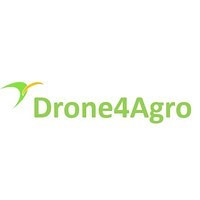Especially during the summer period, a significant amount of the population of the Netherlands experience health issues caused by the stinging hair of oak-caterpillars. These health complaints are often caused by the skin irritation and allergic reaction when the stinging hairs come in contact with the skin. Additional complaints include swelling and inflammation problems on eyes and throats. The health complaints range from simple itching to serious allergic reactions that can last weeks.
research question
Is it possible to develop and deploy a "semi-autonomous" aerial robot(drone) that is capable of early stage detection and selective removal of oak-caterpillars?
background information
Currently, the oak-caterpillars are removed using manual labor, which is labor intensive and time consuming. Cranes are often deployed to reach to various parts of a tree for inspection and combat, which is a slow and an expensive process. In general, since inspection of oak-caterpillars is done with bare eyes of the professionals and detection often occurs at a later stage, significant number of people are affected already. Therefore, a new effective combating methodology is needed.
project goal
The main goal of this project is to conduct feasibility study of the applicability of semi-autonomous aerial robots (drones) for early stage detection and combat against oak-caterpillars. This innovative solution aspires to use smart aerial robots that employ AI-based techniques for early phase and real-time detection of oak-caterpillars. Once the oak-caterpillars are detected, a direct and selective combating resources will be applied. Within this project, the first proof-of-concepts will be developed. The results of this project will be used to expand the existing network and formulate a bigger project to address additional critical aspects in order to develop a complete oak-caterpillar combating drone.
The project will be executed with Research Group of Mechatronics at Saxion, together with the participating innovative SMEs (DronExperts,Drone4Agro). The project will be facilitated by the Municipality of Enschede with respect to policies and the Space53 cluster for networking and testing in operational environments.
innovation
To the best of our knowledge, this innovative project is the first project that will use drones to carry out early phase detection and combat of oak-caterpillars (semi-)autonomously. The innovative aspect of the project include the technology as well as the process, and the innovation can be mainly categorized as follows:
- Early phase robust detection using AI-based vision systems;
- Ecological combating using drones;
- (Semi-)autonomous drones that can cover the area of an oak tree to search for oak-caterpillars;
- The process of using drones for detection and combating oak-caterpillars.
The knowledge within this project will be converted into the first proof-of-concept that makes the technology the first Minimum Viable Product suitable for market evaluations. This will contribute to strengthening the position of the Netherlands as knowledge powerhouse. It will also have significant societal.
duration project
Start project: 01-10-2020 - End project: 30-09-2021
Partners


Gemeente Enschede
Website
Space 53
Website
Drone4Agro
Website
DRONExpert
WebsiteMore information about the project?
